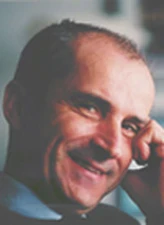Klaus Fraedrich

The 2010 Lewis Fry Richardson Medal is awarded to Klaus Fraedrich for diverse and lasting contributions to the applications of non-linear and stochastic concepts and methods to the atmospheric and oceanic sciences, and for the development of highly valuable modelling suites of broad use and easy access.
Klaus Fraedrich is a truly multi-faceted and insightful scientist. His contributions include, but are not restricted to the following:
Regional climates (1970s): Identification of the River Nile’s source (nocturnal circulation over Lake Victoria) and the Andes/Altiplano outflow anticyclone (detection and impact) are subjects that more recently found the attention of researchers.
Parametrisation of convection (1970-80s): The cloud life cycle, vorticity source and the first stochastic cloud model were introduced into the literature.
Dynamical concepts for climate change (1970-80s) have now become part of the present day teaching on catastrophes, resilience and thresholds in simple climate system models.
Non-linear systems analysis (1980-90s) is applied to weather data, pioneering phase space analysis of weather dynamics and its predictability.
Dynamics and stochastics (90s): The cooperation between two storm tracks and the resonance effects in ocean and atmosphere provide insight into the low-frequency dynamics of atmosphere (North Atlantic Oscillation) and ocean (spatial resonance); coherence resonance is a new subject in the possible impact of stochastics on dynamic feedbacks.
Maximum entropy production (MEP): First application of the MEP principle in a constrained dynamical environment and its possible use in climate dynamics.
Tropical dynamics: Madden-Julian Oscillation (new theory), tropical cyclones (new track forecast system applied by Australian Weather Service), the theory of the 26-degree sea surface temperature threshold are all new approaches to old subjects.
Dynamical concepts for low-frequency climate variability (last ten years): Long-term memory, 1/f-noise (diffusion and adjustment) has been introduced to climate analysis and model inter-comparison.
Modelling (last ten years): Building a user-friendly and freely available GCM hierarchy that includes, in turn, SAM, the Shallow Atmosphere Model; PUMA, the Portable University Model of the Atmosphere, with adjoint diagnostics; and PlaSim, the Planet Simulator (towards a user-friendly Planet-System Model).
His seminal ideas have had a most significant impact on the cognoscenti, i.e., he is a scientist’s scientist. Outside Europe, Fraedrich has a truly important presence in China, including Tibet and Xinjiang, and in Australia. His many and talented students include people with rapidly budding careers in the US (Philip Sura) and the UK (Christian Franzke). Fraedrich’s distinctions so far include Distinguished Overseas Scientist (Melbourne, Australia, 1982-1983), the Max-Planck/Humboldt Prize (1994), the Gay-Lussac Prize (France, 2004), a Max-Planck Fellowship (2007) and Fellow, Hamburg Academy of Sciences (2008). He was President of the Nonlinear Dynamics Section (European Geophysical Society, 1994–1996) and was on the Editorial Board of Nonlinear Processes in Geophysics (1994–1998).
